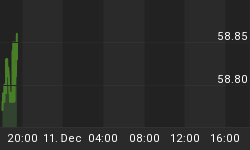Today, let's discuss fear and panic levels in relationship to investing.
It is often said that the VIX (Volatility Index) is used as a measurement of Fear levels for many investors. However, the VIX is utilized more by retail investors than Institutional investors as a trading tool.
What is not generally understood, is that Institutional Investors will often be hedging while the VIX is rising. That is why the NYSE's Down Volume should be looked at in conjunction with the VIX because the two indicators often show that they are in conflict with each other. Additionally, if you were to compare the amount of daily Institutional Selling to the VIX, you would see that there is a significant correlation between the two. (The daily action of both of these are reported on our Standard and Advanced investor sites.)
Market movements aren't simple by any means. Market movements are a reaction to a multitude of buying, selling, hedging, risk adjusting, and other actions by the big market players. Who are the big market players? For the sake of today's discussion, let's define them as entities that have the capability of initiating "program trades" for very large volumes.
When Fear seems to be kicking in, the VIX is usually rising to higher levels. However, if Institutional investors are fully hedged, then their fear levels are actually lower than the retail investor's fear level because they have some level of protection on their investments.
However, if Institutional Investors were to start panicking, then that would infer that they were not properly hedged, or that some "event" suddenly changed the risk/reward equation for their investment strategy. This is one of the reasons why I like to look at the daily levels of "New Lows" on the New York Stock Exchange (the NYSE).
The NYSE is where a significant amount of the "program trading" is initiated. (A lot of program trades are being filtered-out through other avenues these days, but enough generally remains in the NYSE for a statistically valid projection to be made.)
Which takes us back to discussing the New Lows again on the NYSE. The NYSE stocks have a larger Institutional investor ownership percentage than stocks from other indexes. I just checked the Institutional Investor "core holdings" list this morning, and it turned out that 84.5% of the "core holding" stocks were NYSE listed stocks.
So, the New Lows on the NYSE to some degree is a reflection of fear levels being exhibited by Institutional Investors.
So let's discuss some parameters to apply when looking at the NYSE New Lows ...
During the past few weeks, we had commented that a rise above 28 should be a red flag for investors to start being more observant of what is happening in other market areas such as technical indicators and/or changes in underlying fundamentals.
When you get close to a level of 28, you could be seeing elevated worry levels, but it generally isn't until the New Lows go above a level of 50 that panic selling activity starts to kick in by Institutional investors or "program trading" initiators. So, with this in mind, let us look at the current chart of NYSE New Lows for yesterday.
As you can see on the chart below, yesterday's New Lows on the NYSE came in at 15. That was below a level of 28 so it could be inferred that Institutional Investors were not showing any recognizable or substantial fear yesterday. This may actually may be surprising to many, because many investors are very worried about Libya and an overspill possibility in Saudi Arabia.

















